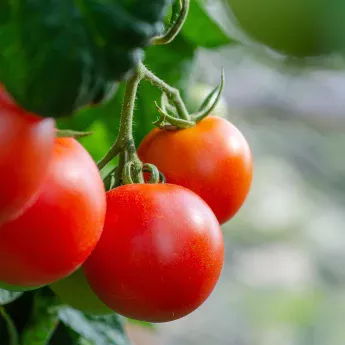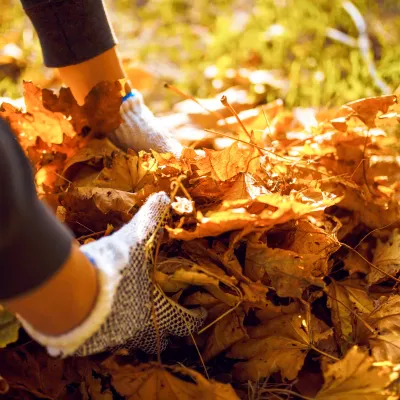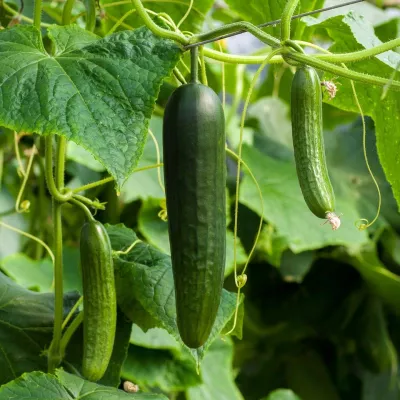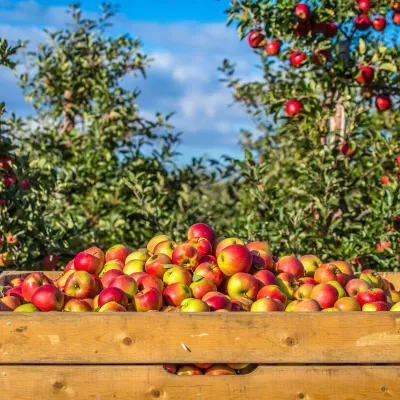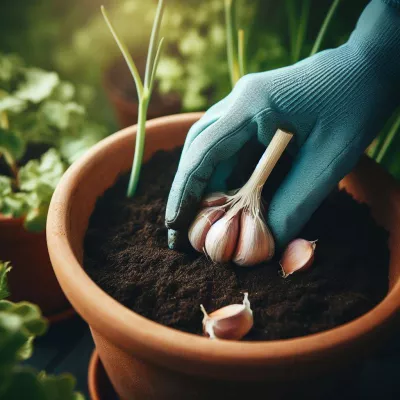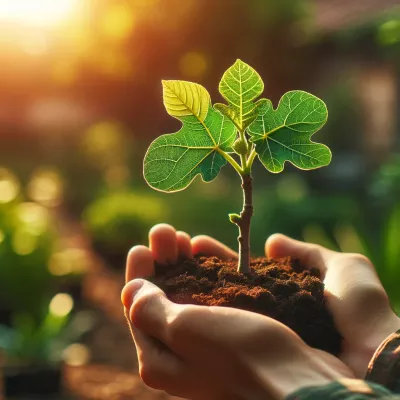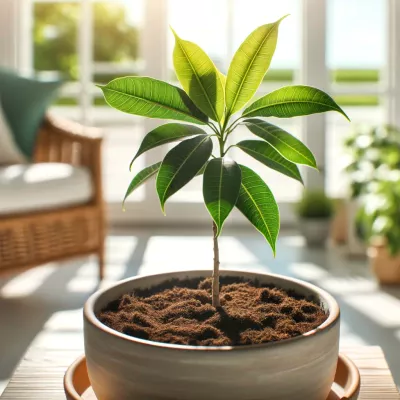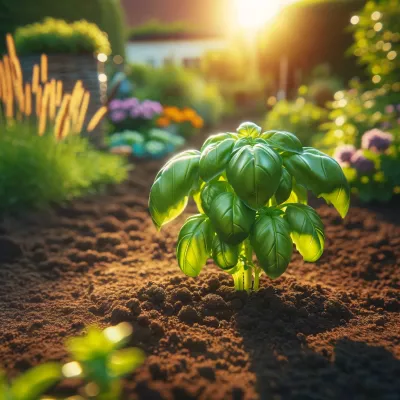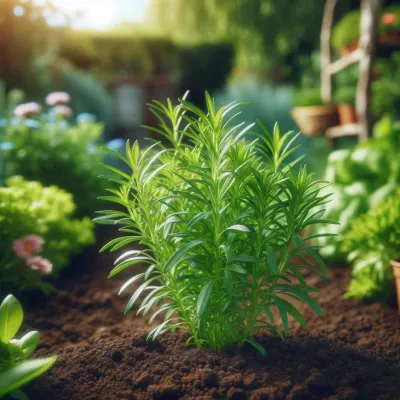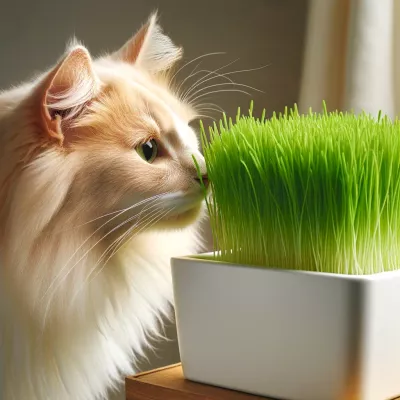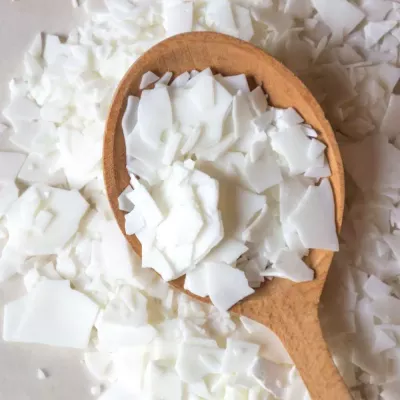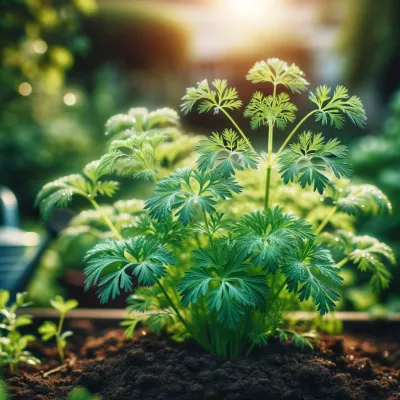

Cumin is not only a popular spice that enhances the flavor of dishes but also a valuable plant in the world of gardening. Its unique aromatic qualities and healing properties make cumin a desirable guest in any garden. The ease of cultivation and care for cumin makes it accessible even for beginner gardeners, and its versatility in culinary and folk medicine constantly expands its circle of fans. In this article, we will provide detailed information on how to successfully grow cumin in the garden and provide the necessary care to obtain a rich harvest.
Historical Overview of Cumin
Origin of Cumin
Cumin, scientifically known as Carum carvi, has a long and rich history. Its roots trace back to ancient times when it was used not only as a spice but also as a medicinal remedy in various civilizations, starting with ancient Egypt. Evidence of its use has been found even in ancient Egyptian tombs.
Distribution of Cumin Worldwide
Over time, cumin spread throughout Europe and Asia, becoming a key ingredient in many culinary traditions. In medieval Europe, it was particularly valuable and used both for cooking and medicinal purposes.
Cumin in the Modern World
Today, cumin is a widely known spice used in various culinary styles around the world. It continues to attract the attention of not only chefs but also researchers studying its potential health benefits.
Choosing a Location and Soil Preparation for Growing Cumin
Optimal Location for Cumin
For successful cumin cultivation, choose a location where the plant can receive an adequate amount of sunlight. Cumin prefers well-illuminated areas, so an ideal spot is where the plant will receive direct sunlight for at least 6-8 hours a day. Additionally, it's important to protect the plants from strong winds that can damage the delicate cumin stems. If you have a windy area, consider using protective screens or planting cumin in sheltered areas, such as near a fence or house wall.
Soil Preparation
Cumin prefers fertile, well-draining soil. Before planting, make sure that the soil in your area is suitable for this purpose. If your soil is heavy or clayey, it can be improved by adding compost or manure to increase fertility and improve drainage. The soil pH balance is also important; cumin grows best in neutral to slightly alkaline soil with a pH of 6.5 to 7.5.
Soil Fertilization
Before planting cumin, it's recommended to add a balanced fertilizer with nitrogen, phosphorus, and potassium to the soil. This will provide the plants with the necessary nutrients at the initial stage of growth. During the growing season, you can also supplement the plants with organic fertilizers such as compost or diluted cow dung.
Planting Cumin in Your Garden
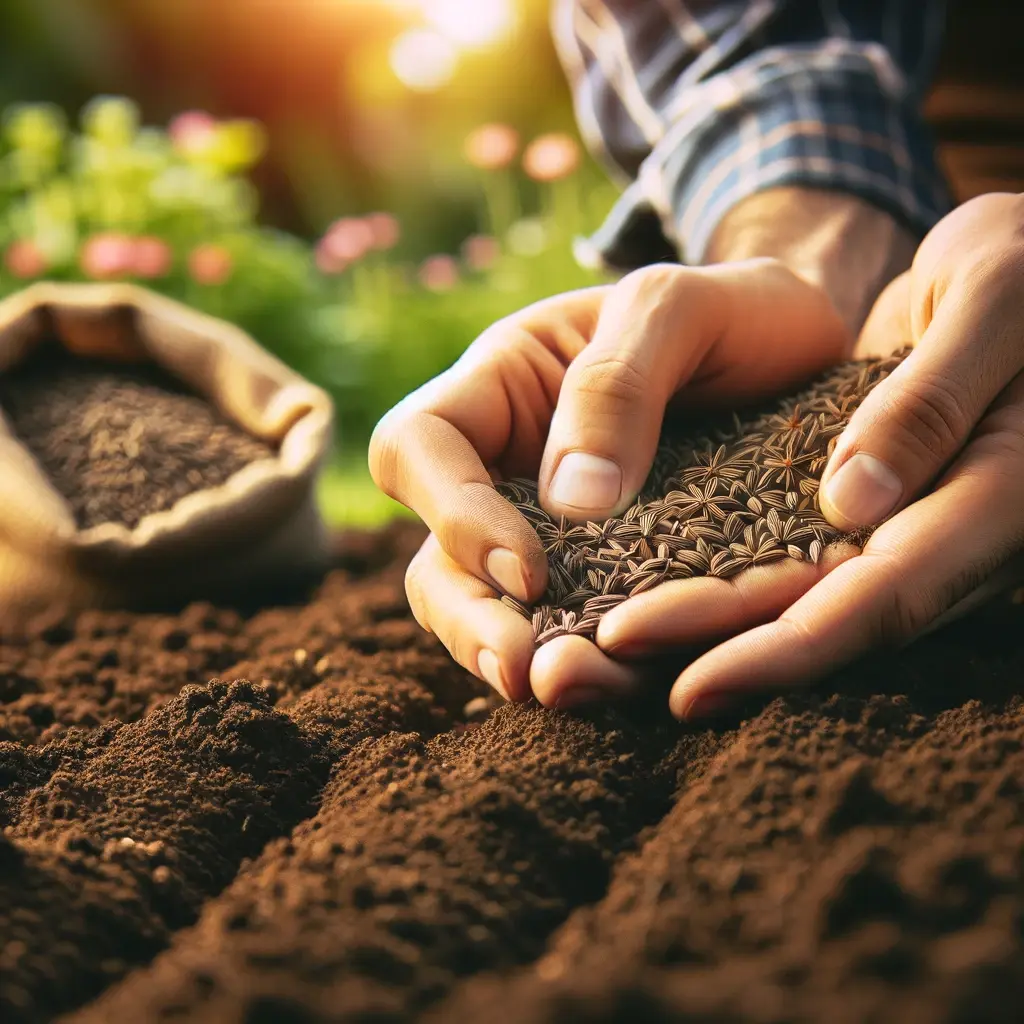
Optimal Time for Planting Cumin
Choosing the right time to plant cumin is crucial for ensuring healthy growth and a bountiful harvest. Depending on your climate region, cumin is usually planted either in the spring or the fall.
- Spring Planting: In regions with a moderate climate, cumin seeds can be sown in open soil at the end of spring when the threat of frost has passed. The optimal time is after the soil has warmed up sufficiently.
- Fall Planting: In warmer regions, cumin can be planted in the fall. This allows the plants to establish themselves before winter and quickly start growing in the spring.
Instructions for Sowing Cumin Seeds
Follow these steps for successful cumin seed sowing:
-
Soil Preparation: Before sowing, make sure the soil is loose, moist, and well-drained. Lightly tilling the soil promotes better seed germination.
-
Planting Depth: Cumin seeds should be sown at a depth of about 1-2 cm. Planting too deep can hinder germination.
-
Spacing Between Seeds: Space the seeds approximately 15-20 cm apart to allow enough room for each plant to grow and develop.
-
Watering After Sowing: Gently water the planted seeds, trying not to wash away the soil. Maintain moderate soil moisture until the first sprouts appear.
-
Caring for Seedlings: After the sprouts appear, regularly check the soil and water the plants as needed. Avoid overwatering, as it can lead to root rot.
Caring for Cumin
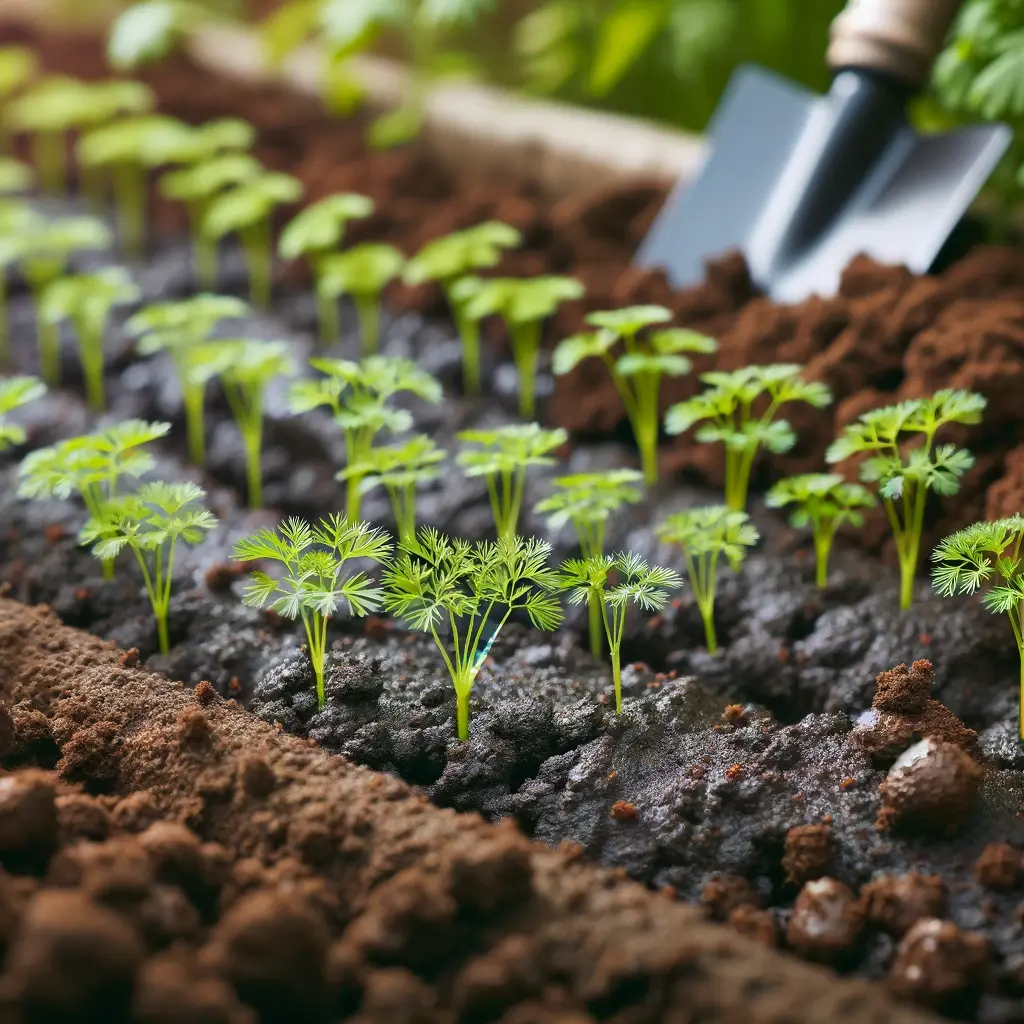
Cumin Watering
Proper watering plays a crucial role in growing healthy cumin. Here are the key recommendations:
- Watering Frequency: Cumin prefers moderately moist soil. Water the plants when the top layer of soil becomes dry to the touch. This is typically 1-2 times a week, depending on the climate and weather conditions.
- Water Amount: Avoid water stagnation around the roots. Provide light but thorough watering to ensure the water reaches the roots.
Pest and Disease Control
Cumin can be susceptible to pests and diseases. Here are some precautions:
- Pests: The main pests of cumin are ants, aphids, and caterpillars. Regularly inspect the plants to spot their presence in time. Use natural insecticides or biological control methods.
- Diseases: Cumin can suffer from fungal diseases, especially in high humidity conditions. Ensure good air circulation and avoid over-watering the soil. Apply appropriate fungicides at the first signs of disease.
Cumin Fertilization
Proper fertilization helps cumin grow healthy and increases the yield. Here are fertilization recommendations:
- Types of Fertilizers: Use balanced mineral fertilizers with nitrogen, phosphorus, and potassium. Organic fertilizers like compost or manure are also suitable for cumin fertilization.
- Fertilization Schedule: First fertilization should be done 3-4 weeks after germination, and then repeat every 4-6 weeks during the growing season.
Tips from Professionals on Growing Cumin
Choosing the Variety
- Variety Selection: Professional gardeners recommend choosing cumin varieties adapted to your climate. Some varieties are better suited for colder regions, while others are suitable for warmer climates.
Optimal Planting Time
- Climate Consideration: Monitor the weather conditions in your region. In some areas, it is best to plant cumin in early spring, while in others, closer to summer or even in the fall.
Caring for the Plant
- Regular Watering: Cumin does not like overwatering, so it is important to provide moderate but regular watering.
- Pest and Disease Control: Regularly inspect plants for signs of diseases or pests. Timely intervention will help preserve your harvest.
Soil Optimization
- Soil Analysis: Professionals often recommend conducting a soil analysis before planting cumin to determine if additional fertilizers or pH adjustments are needed.
Harvesting
- Harvesting Time: Monitor the ripening of the seeds. Harvest them when they start to darken but have not yet opened to prevent them from falling off.
Culinary Use
- Drying the Seeds: For culinary use, it is best to naturally dry cumin seeds. This will help preserve the maximum aroma and flavor.
Experimenting with Cultivation
- Try Something New: Don't be afraid to experiment with different cultivation methods and cumin varieties to find the optimal choice for your garden.
Culinary Uses of Cumin

Cumin is not only a valuable spice in the garden but also an essential ingredient in many culinary masterpieces. From refined Asian dishes to traditional European recipes, cumin adds a unique aroma and flavor, making each dish special. Its versatility allows for various culinary experiments.
Historically, cumin played a significant role in global cuisine. In ancient Egypt, cumin was used not only as medicine but also as a spice. In the Middle Ages, it became popular in Europe, adding zest to bread and cheese. In India and the Middle East, cumin is a key component of many spices and marinades.
Popular Dishes with Cumin
- Eastern Sweets: In the Middle Eastern countries, cumin is often added to sweet pies and cookies.
- Meat Dishes: In Europe and Asia, cumin is used to prepare aromatic meat dishes.
- Vegetable Dishes: Cumin pairs perfectly with vegetables, especially in Indian and Mediterranean cuisines.
Culinary Preparation Tips
Store cumin in an airtight container in a dark and cool place to preserve its aroma. Ground cumin is best used within a few months, while whole seeds retain their freshness longer.
Simple Cumin Recipe
- Meat Marinade: Mix ground cumin with olive oil, garlic, lemon juice, and spices for a delicious marinade.
- Salad Dressing: Use cumin to prepare a flavorful dressing with vinegar and oil.
Health and Nutrition
Cumin is rich in vitamins and minerals, promotes digestion, and strengthens the immune system. It is often used in dietary nutrition and to improve metabolism.
Growing cumin in your garden is not only an exciting process but also a wonderful way to enrich your culinary palette with a unique and beneficial spice. We have covered all aspects, from choosing the location and preparing the soil to planting, care, and using the harvest. Being aware of the best practices for growing and culinary use of cumin will allow you to enjoy its rich taste and aroma in a variety of dishes.
Remember that the key to success is patience, care, and a willingness to experiment. Each season provides new opportunities for learning and improving your gardening skills. Grow cumin with love and attention, and it will surely reward you with a bountiful harvest and enrich your life with new delicious and healthy recipes.
We hope this article becomes your reliable guide in the world of growing cumin and helps you achieve excellent results on your culinary journey. Happy gardening and tasty culinary discoveries with cumin!


 Українська
Українська
 Русский
Русский
 Deutsch
Deutsch
 Polski
Polski
 Magyar
Magyar
 Ελληνικά
Ελληνικά
 Dansk
Dansk
 Español
Español
 Italiano
Italiano
 中文(简体)
中文(简体)
 한국어
한국어
 Latviešu
Latviešu
 Lietuvių
Lietuvių
 Nederlands
Nederlands
 Norsk (Bokmål)
Norsk (Bokmål)
 Bahasa Indonesia
Bahasa Indonesia
 Български
Български
 Português
Português
 Română
Română
 Slovenčina
Slovenčina
 Slovenščina
Slovenščina
 Türkçe
Türkçe
 Suomi
Suomi
 Français
Français
 Čeština
Čeština
 Svenska
Svenska
 Eesti
Eesti
 日本語
日本語
